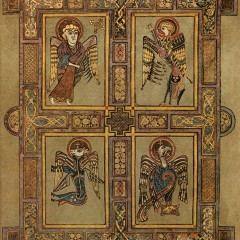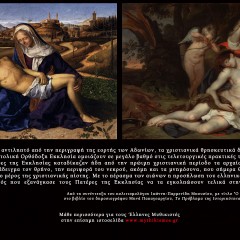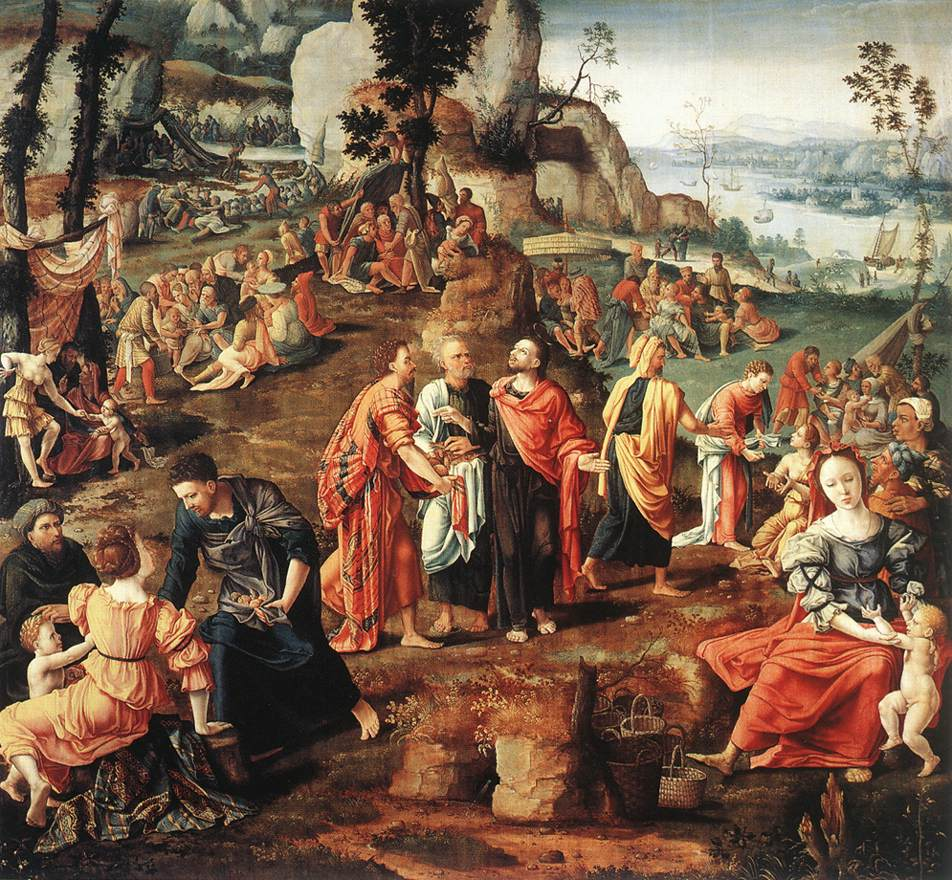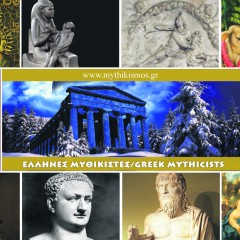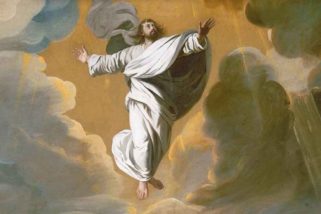The Gospel Dates (By Acharya S/ D.M Murdock)
When were the gospels written? With their absence in Justin Martyr’s works, we remain with the dating of the gospels to the last quarter of the second century. By Acharya S/D.M Murdock The Gospel Dates When scrutinized, the Pauline epistles do not reveal any historical Jesus; nor do they demonstrate any knowledge of the existence of the four canonical gospels, Matthew, Mark, Luke and John. As has been proved repeatedly, the gospels themselves cannot be viewed as “history” written by “eyewitnesses.” Besides the fact that they date to much later than is supposed, the gospels frequently contradict each other, and, based on the numerous manuscripts composed over the centuries, have been determined (by German theologian Johann Griesbach, for one) to be a mass of some 150,000 “variant readings.” In this regard, The Interpreter’s Dictionary of the Bible, a Christian book, contains an article written by M.M. Parvis (vol. 4, 594-595), who states: The New Testament is now known, in whole or in part, in nearly five thousand Greek manuscripts alone. Every one of these handwritten copies differ from the other one It has been estimated that these manuscripts and quotations differ among themselves between 150,000 and 250,000 times. The actual figure is, perhaps, much higher. A study of 150 Greek manuscripts of the Gospel of Luke has revealed more than 30,000 different readings It is safe to say that there is not one sentence in the New Testament in which the manuscripts’ tradition is wholly uniform. Some sources place the figure for the “variant readings” even higher, including The Anchor Bible Dictionary On CD-ROM (“Textual Criticism, NT”), which says, “Perhaps 300,000 differing readings is a fair figure for the 20th century (K.W. Clark 1962: 669).” So much for “God’s infallible Word” and his “inspired scribes.” Apologists have come up with all sorts of excuses for this manmade mess; their excuses only demonstrate further that man’s hand – and not that of the Almighty God – has been involved in the creation of Christianity and its texts at every step. It would be impossible to date the appearance of the gospels based on the extant manuscripts, since the autographs or originals were destroyed long ago, an act that would appear to be the epitome of blasphemy, were these texts truly the precious testimonials by the Lord’s very disciples themselves. Although a miniscule bit of papyrus (Rylands P52) dating to the middle of the second century has been identified speculatively as part of “John’s Gospel” (18:31-33), the oldest fragments conclusively demonstrated as coming from the canonical gospels date to the 3rd century. The two verses of “John’s Gospel,” comprising only about 60 words,...
Έξι κάρτες για τον Μυθικισμό
Σας παρουσιάζουμε έξι κάρτες πληροφοριακού για τον Μυθικισμό περιεχομένου, που δημιουργήσαμε αλιεύοντας υλικό από τη νέα δημοσιογραφική έρευνα του Μηνά Παπαγεωργίου, “Το πρόβλημα της ιστορικότητας του Ιησού” (εκδ. Δαιδάλεος). Οι κάρτες αυτές περιέχουν πολύ ενδιαφέροντα αποσπάσματα που έχουν παρθεί από τις συνεντεύξεις των D.M Murdock (ο Ιησούς απέναντι στους Βούδα, Κρίσνα και Ώρο), Χαρίτας Μήνη (ο Ιησούς απέναντι στον Διόνυσο), Ιωάννη-Παρμενίδη Μπουσίου (Ο Ιησούς απέναντι στον Άδωνη), Kenneth Humphreys, Robert Price και Richard Carrier και μπορούν κάλλιστα να χρησιμοποιηθούν από τον οποιονδήποτε για την προώθηση των Μυθικιστικών ιδεών στη χώρα μας. Κάντε κλικ στις εικόνες ...
Was There No Historical Jesus? The Second Century Apologists (By Earl Doherty)
The Christian Apologists of the second century present us with a dramatic picture of continuing diversity in the Christian movement and, among most of them, a surprising and revealing silence on Jesus of Nazareth. The first 100 years of Christianity have received the greatest attention from Christian scholarship. Within the period up to about 130, so conventional wisdom has it, lie Jesus himself and the origins of the church, as well as all the documents which ended up in the canon of the New Testament. Also included are the surviving writings by that varied group known as the Apostolic Fathers, which reveal some of the internal conditions and conflicts within the growing movement. The period following, and running for another 100 years or so, was the age of the Apologists. These were men like Justin Martyr who presented and justified Christianity to an outside world which was largely hostile to the new faith. By Earl Doherty In Parts One to Three of the Main Articles, I provided a picture of the origins and growth of Christianity which rejects the existence of an historical Jesus of Nazareth. One of the key features of that picture is the unusual diversity of expression to be found in the early Christian record: about the figure of Jesus, about Christian theology, ritual practice and views of salvation. This diversity points not to a human founder and single missionary movement proceeding out of him, but to a widespread and uncoordinated religious movement founded on various beliefs in a divine, intermediary Son of God, a wholly spiritual entity. A related feature is the virtually universal silence in that early record on anything to do with the human man and events known to us from the Gospels. What do we find as Christianity enters its second 100 years? In fact, we find more of the same. Those who have studied the apologists have tended to make some surprising observations. They note how little continuity these writers show with earlier traditions. Their ideas often have nothing in common with those of the New Testament epistles and even the Gospels. There is no dependence on Paul. Moreover, such writers seem not to move in ecclesiastical circles. Even Justin, though he worked in Rome, has nothing to say about bishops and church organizations. And almost all of them before the year 180 (Justin being the major exception) are silent on the Gospels and the figure of Jesus contained in them. In fact, one could say that they pointedly ignore any historical figure at all. This astonishing state of affairs, taken with the fact that the Gospels and...
Χρόνια πολλά – Καλά Μυθούγεννα!
Οι Έλληνες Μυθικιστές και οι συντελεστές του Mythikismos.gr εύχονται σε όλους τους φίλους και επισκέπτες της ιστοσελίδας χρόνια πολλά και καλά Μυθούγεννα! Η ευχετήρια κάρτα μας έρχεται να υπενθυμίσει την παγκόσμια αξία των μύθων και των κοινών στοιχείων που αυτές παρουσιάζουν σε κάθε παράδοση ή θρησκεία του κόσμου. Δεν υπάρχει καμία απόλυτη αλήθεια παρά η διάθεση του ανθρώπου, από τη φύση του, να αναζητά τη γνώση και την αλήθεια. Είτε πιστεύετε κάπου είτε όχι, είτε δηλώνετε άθεοι, αγνωστικιστές, εθνικοί, παγανιστές, βουδιστές, πανθεϊστές, χριστιανοί, μουσουλμάνοι, εβραίοι, ινδουιστές, σαμάνοι (ή οτιδήποτε άλλο), ευχόμαστε οι φυσικές διεργασίες που λαμβάνουν χώρα τη συγκεκριμένη χρονική περίοδο, με το φως της ημέρας να κερδίζει και πάλι έδαφος, να αποκτήσουν αντανάκλαση στις ζωές σας και στις ζωές των αγαπημένων σας προσώπων. Από τη μεριά μας υποσχόμαστε να συνεχίσουμε το ίδιο δυναμικά και το 2014. Είναι άλλωστε ιδιαίτερα ενθαρρυντικό πώς σε έναν περίπου μήνα λειτουργίας της, η ιστοσελίδα μας έχει ξεπεράσει τις 3.500 χιλιάδες προβολές, ένας αριθμός που σαφέστατα ευελπιστούμε να αυξηθεί ραγδαία το αμέσως επόμενο διάστημα! Έλληνες...
Το Ελληνικό «Τριέσπερον» ή Ηλιούγεννα
Στη θέση των «Χριστουγέννων», οι πρόγονοί μας εόρταζαν το λεγόμενο «Τριέσπερον», μία εορτή η οποία γενικεύεται από τους ελληνιστικούς χρόνους κι εντεύθεν, προς τιμήν των πυρφόρων και ηλιακών θεοτήτων Ηρακλέους (ο οποίος κατά τον Κορνούτο ορίζεται ως «ο εν τοίς όλοις Λόγος καθ’όν η Φύσις ισχυρά και κραταιά εστί και απεριγένητος ούσα, μεταδοτικός ισχύος και τοίς κατά μέρος και αλκής υπάρχων») και Ηλίου. Το «Τριέσπερον» ξεκινούσε με το Χειμερινό Ηλιοστάσιο (τη νύκτα της 21ης προς την 22α του Δεκεμβρίου, τη μεγαλύτερη δηλαδή νύκτα του έτους) και κορυφωνόταν με την αναγέννηση του φωτοδότη Ηλίου (τη νύκτα της 24ης προς 25η, όταν η ημέρα έχει ήδη μείνει «στάσιμη» επί 3 ημέρες μετά το Ηλιοστάσιο και αρχίζει πλέον να μεγαλώνει). Αργότερα, με την επιβολή της κρατικής ηλιολατρίας από τον Ρωμαίο αυτοκράτορα Αυρηλιανό, το ελληνικό «Τριέσπερον» επισκιάσθηκε (κατά μίμηση της παρσικής λατρείας του Θεού Μίθρα που εώρταζε και αυτή την γέννηση του Θεού στις 25 Δεκεμβρίου) από την «επίσημη» ρωμαϊκή εορτή του«Ανίκητου Ήλιου» («Sol Invictus»). Η «Ημέρα της Γεννήσεως του Ανίκητου Ηλίου» («Dies Natalis Solis Invicti»), η στιγμή δηλαδή που ο ακατάβλητος Ήλιος, έχοντας θριαμβεύσει επάνω στο σκοτάδι της «bruma» (βλέπε κατωτέρω), αρχίζει να ανέρχεται δυναμικά και υπερήφανα στον ουράνιο θόλο, είχε, φυσικά, ως προεόρτιο τη νύκτα του Χειμερινού Ηλιοστασίου, όταν ετιμάτο σιωπηρώς η Θεά του Κάτω Κόσμου Αντζερόνα (Angerona, Dea Tacita), προστάτις των νεκρών και προσωποποίηση της Θελήσεως, της Εσωτερικής Φωνής, της Ενοράσεως και της Σιωπής, στα λεγόμενα «Ντιβάλια» ή «Αντζερονάλια» («Divalia» ή «Angeronalia», βλ. Claudio Rutilio, «Η Θεολογία των Ρωμαίων»). Τα «Divalia» έκλειναν τις λεγόμενες «σύντομες ημέρες» («brevissimi dies», «bruma») που σηματοδοτούσαν την ολοκλήρωση της ηλιακής διαδρομής μέσα στον ενιαυτό. Ο Sol «Invictus» συνέχισε να λατρεύεται ως Ανώτατος Θεός και καθοδηγητής της οργανωμένης κοινωνίας και των Ρωμαίων αυτοκρατόρων μέχρι την εποχή του Κωνσταντίνου, ο οποίος άρχισε την βασιλεία του ως τυπικός ηλιολάτρης. Υπάρχουν νομίσματα ως το 324 μ.α.χ.χ. που εμφανίζουν τον Κωνσταντίνο να δοξάζει τον Sol ως «Πηγή της Αυτοκρατορικής Δυνάμεως», μόνον δε κατά τα τελευταία χρόνια της βασιλείας του οι αναφορές στον Sol και τις άλλες εθνικές θεότητες εξαφανίσθησαν από τα νομίσματα. Η εορτή πάντως του «Sol Invictus» επικαλύφθηκε με τη σειρά της αμέσως μετά την επικράτηση του Χριστιανισμού (4ος αιώνας, με απόφαση του Πάπα Ιουλίου) από τα γνωστά μας «Χριστούγεννα» (που έως τότε υπολογίζονταν στις 6 Ιανουαρίου -ημερομηνία που στην Ανατολή παρέμεινε μέχρι τουλάχιστον τη βασιλεία του αυτοκράτορα Γιουτπράβδα, ελληνιστί Ιουστινιανού-, ή στις 19 Απριλίου, ή στις 20 Μαϊου κατ’άλλους, ενώ στο «Pascha Compustus» του 243 μ.α.χ.χ. η «γέννηση» του Τζεσουά ορίζεται στις 28 Μαρτίου). Η μετέπειτα χυδαία ιδιοποίηση του ελληνικού «Τριεσπέρου» δεν εμπόδισε φυσικά τους πιο σκληροπυρηνικούς απολογητές της νέας Θρησκείας να περιγελούν τους Εθνικούς, κατά την προσφιλή τους πρακτική, ακόμη και κατά τον 3ο αιώνα...

